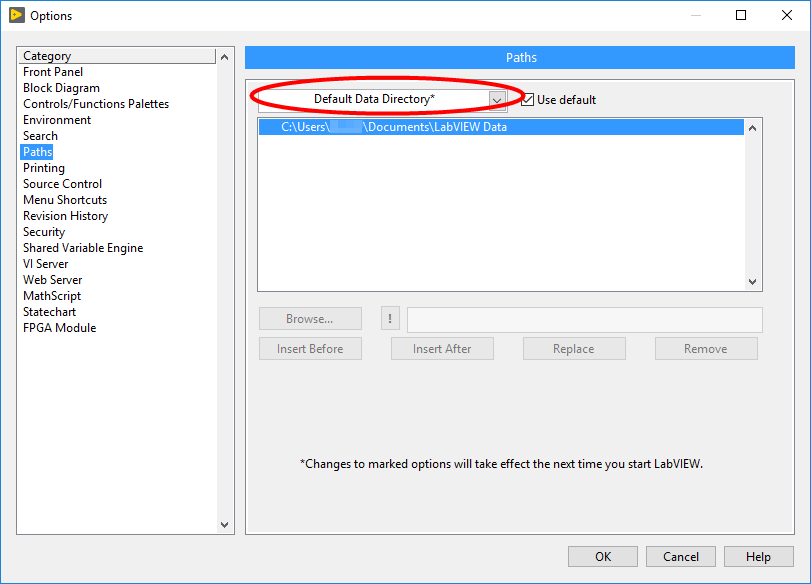Solution
LabVIEW on Windows
LabVIEW error log files are stored in LabVIEW's Default Data Directory. You can view or edit this location from the menu Tools » Options » Paths. Then select Default Data Directory in the drop-down menu. At this point, your window will resemble the screenshot below:

The default LabVIEW data directory is:
C:\Users\<My User>\Documents\LabVIEW Data, where
<My User> refers to your user account's folder.
LabVIEW 2011 and later:Inside the LabVIEW data folder, continue navigating to
\LVInternalReports\LabVIEW\<LabVIEW Version>\. This directory contains folders for each LabVIEW crash. Each folder contains a zip file for each complete crash report. Each crash report contains at least a LabVIEW log as
.txt file, and a crash dump file in
.dmp format. This article contains more information about NI Error Reporting in LabVIEW 2011 and later versions:
NI Error Reporting (NIER) FAQ .
LabVIEW Versions 2010 and earlier:Inside the LabVIEW data folder, continue navigating to
\lvfailurelog\. This directory contains crash log files in
.txt format for each LabVIEW crash. Each crash log file is stamped with the date and time of the individual crash occurrence.
LabVIEW on MAX MAC OS X
In Mac OS X, crash reports are saved as a .log file in the ~/Library/Logs folder, which is in a hidden directory. To see this folder, open Finder and press Command+Shift+G to open the Go To Folder dialog. Type ~/Library/Logs to open the folder containing the crash reports.
LabVIEW NXG
LabVIEW error log files are stored in the directory C:\Users\<Your user>\AppData\Local\National Instruments\<LabVIEW NXG Version>\ErrorReports, where <Your user> is your account's folder.